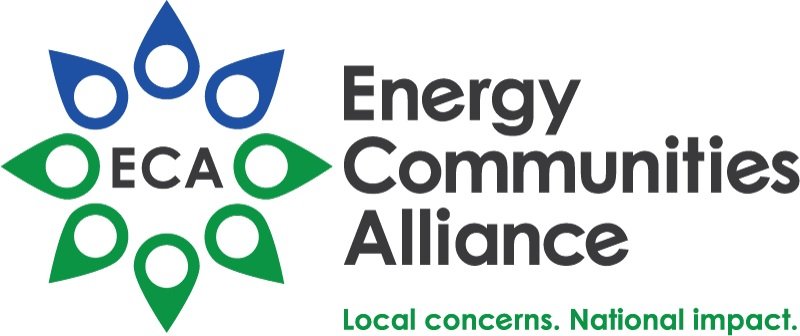ECA RECOMMENDATIONS
Drawing from decades of experience working with DOE communities, ECA has developed recommendations for successful environmental cleanup. The recommendations for each issue area in this guide aim to advise both the communities and DOE on the best path forward, emphasizing the need for communities to be involved in each step of the decision-making process.
-
Most sites are well past the starting point for cleanup when original priorities were established. However, changes in federal leadership, environmental conditions, and evolving technologies may provide new opportunities to integrate communities’ values into the ongoing cleanup mission.
Local governments and communities should:Develop and regularly update priorities related to DOE operations and cleanup activities.
Maintain continuous dialogue with DOE site officials, headquarters leadership, and educate Congressional delegation to regularly discuss priorities including the site budget, milestones, and end states.
Understand the federal government’s goals, opportunities, and limitations. Within the cleanup mission, there are certain constraints the federal government faces when remediating a site, including internal policies (orders), congressional mandates, regulatory requirements and funding restrictions.
DOE should:Incorporate input from communities in planning for both short- and long-term site goals.
Engage the communities early, regularly, and meaningfully. The best way to undermine public confidence is through a “decide, announce, and defend” approach to public engagement. DOE and the regulatory agencies should instead establish substantive conversation early in the process.
-
Local governments and communities should:
Develop relationships with EM field managers and DOE headquarters staff to ensure regular communication takes place.
Work with DOE to resolve disagreements, explaining concerns and opportunities fully to attempt to develop solutions.
DOE should:In decision-making processes, consult with local elected officials on a pre-decisional basis when any impact on the local community is possible.
Seek input from local governments when developing programmatic proposals, federal facility agreements, and environmental impact statements in order to educate interested parties and avoid mistrust and controversy.
Explain contracting decisions when new contracts are awarded or existing contracts renewed.
-
Questions about risk and risk management are foundational to cleanup decisions as federal facilities are not remediated to pre-contamination levels (commonly referred to as “background”). Addressing risk requires the parties to address both technical risks and perceptions of risk, and to understand and acknowledge the level of uncertainty. It also requires the parties to understand the fundamentals of risk communication.
Local governments and communities should:Understand how the various parties manage risk, especially where there is a delta of uncertainty.
Evaluate whether the public trusts or accepts the calculable risk; educate and be transparent about the perceptions of risk.
Ask questions to DOE staff at the site and at headquarters—seek data and other information about any potential risks to workers or environmental impacts.
DOE should:Lead the effort to provide public information on contamination from their activities.
Provide resources so that an impacted community can hire experts to perform independent analyses of key community issues and enable local governments to educate their constituents.
-
Local governments and communities should:
Meet at least annually with Congressional delegations to discuss appropriations for the site—whether to continue current levels of funding or request additional funds.
Understand the timelines for the DOE budget request process and appropriations process. DOE often begins preparing the next fiscal year’s budget request nearly a year in advance.
DOE should:Engage local elected officials and other stakeholders at every stage of the budget development and appropriations process to create a budget that meets cleanup needs.
Work with the Office of Management and Budget to develop regulatory-compliant budgets.
Provide funding for education, outreach, and feasibility studies on vital DOE operations.
Avoid the consequences that inadequate, unsustainable, unpredictable, and non-compliant budgets can have on the cleanup mission, trust with regulators, and health and safety of communities.
-
Local governments and communities should:
Understand the laws and regulations that govern their sites (CERCLA, RCRA, tri-party agreements, and DOE Orders).
Communicate with all of the parties involved in the legal agreements—the State, EPA, and DOE.
DOE should:Understand local government zoning. For federal property that is destined to be transferred out of federal ownership to a local government or private entity, local land use laws, including zoning authority, help establish the future use of the site.
Move beyond regulatory minimums. DOE can help build trust in the communities by participating in various forums with tribes, local non-governmental organizations, local government coalitions, and site-specific advisory boards.
-
Local governments and communities should:
Explore partnerships with local universities and technical colleges for workforce and educational opportunities.
Identify potential land transfers from DOE to the local government to facilitate economic development—housing, recreation, businesses—which ultimately help attract and retain a strong workforce in the communities.
Invite site leaders and contractors to community-sponsored events to support local education and workforce development.
Get the Congressional delegation involved when necessary. Issues with PILT payments, land conveyances, and other economic matters may warrant a letter or legislation from the community’s representatives in Congress.
DOE should:Invest in workforce development, education, and apprenticeship programs in the communities.
Identify opportunities to work with the community on economic activities that facilitate the DOE/NNSA mission.
Support real and personal property transfers that support community reinvestment.

